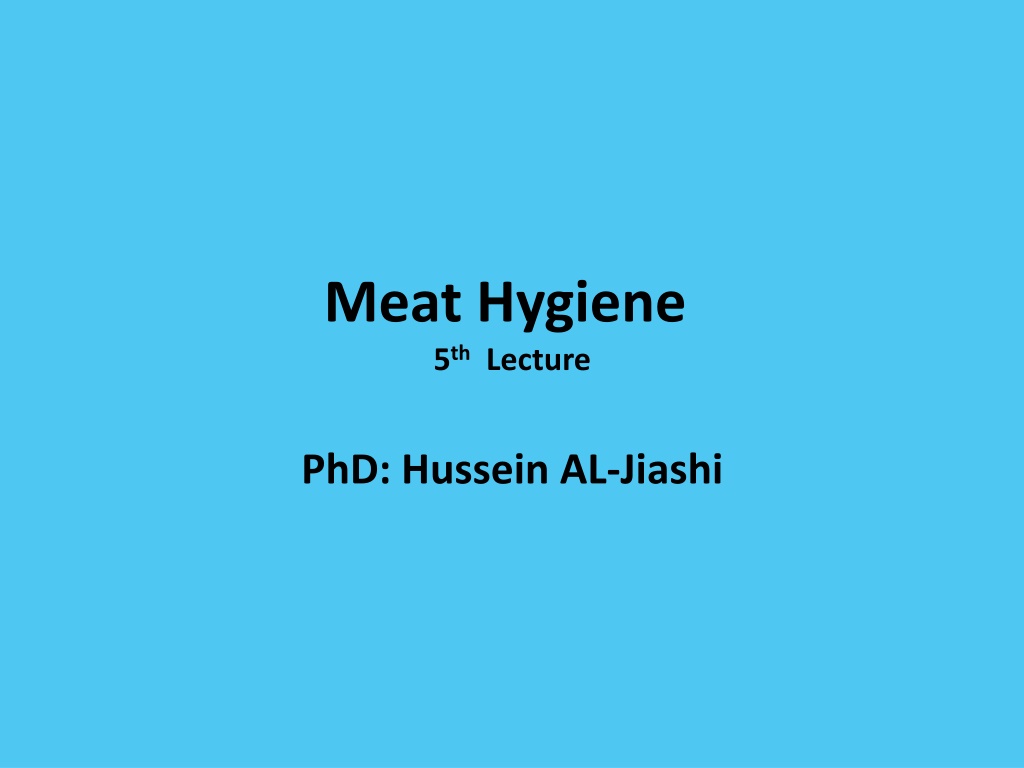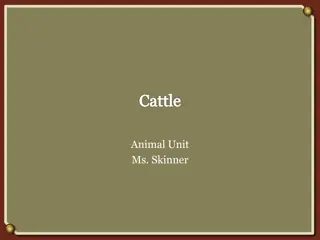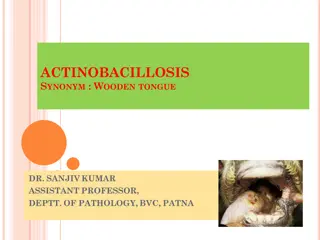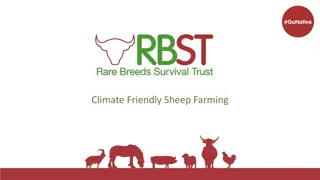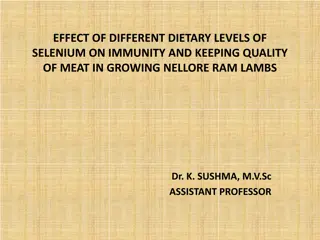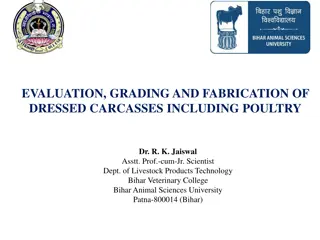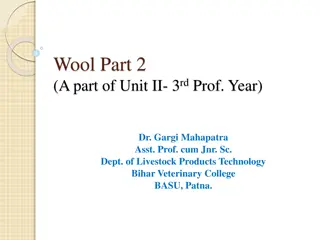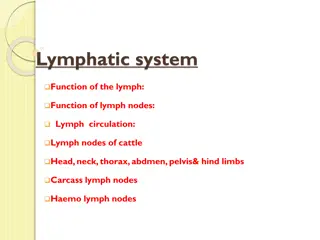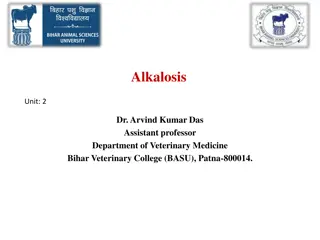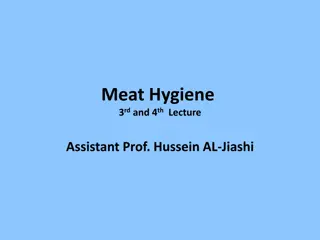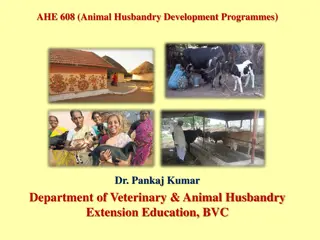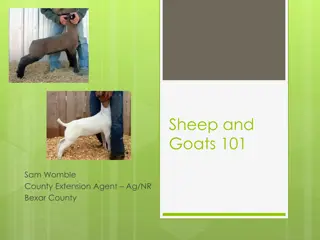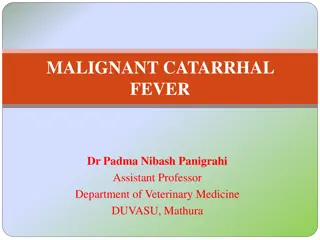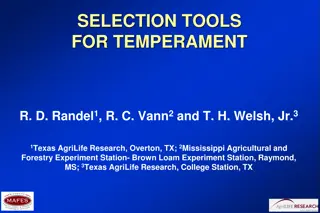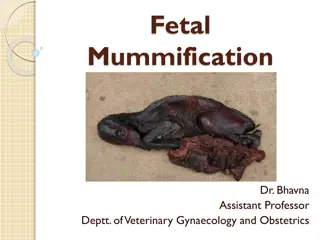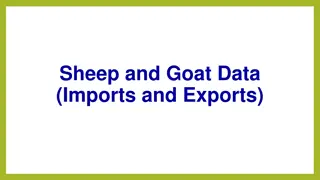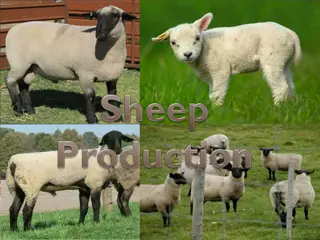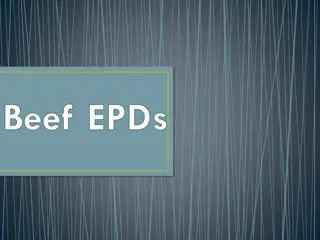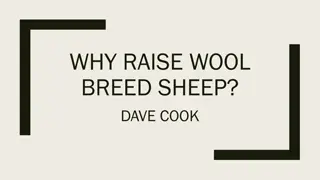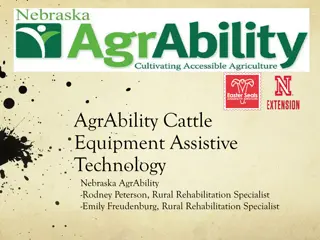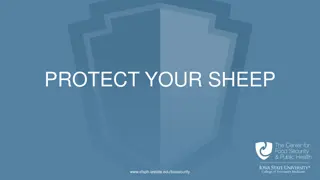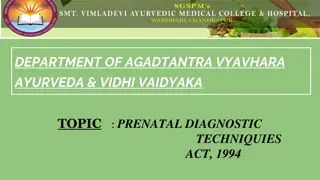Understanding Sex Characteristics and Differentiation of Cattle and Sheep Carcasses
Explore the distinct sex characteristics of cattle carcasses including cows, heifers, bullocks, and bulls, as well as the unique features of sheep carcasses such as rams, wethers, gimmers, and ewes. Learn how to differentiate between sheep and goat carcasses based on specific criteria to avoid confusion. Visual aids and detailed descriptions provided by Dr. Hussein AL-Jiashi in his 5th lecture on meat hygiene.
Uploaded on Sep 24, 2024 | 0 Views
Download Presentation

Please find below an Image/Link to download the presentation.
The content on the website is provided AS IS for your information and personal use only. It may not be sold, licensed, or shared on other websites without obtaining consent from the author. Download presentation by click this link. If you encounter any issues during the download, it is possible that the publisher has removed the file from their server.
E N D
Presentation Transcript
Meat Hygiene 5thLecture PhD: Hussein AL-Jiashi
Sex characteristics of carcasses (Cattle) Cow (1) Area of udder removal obvious. (2) Supramammary node or part may be left on carcass. (3) Pelvic cavity is wide, pubic bone is thin, almost straight, tubercle is small and not cartilaginous. (4) Gracilis muscle appears bean-shaped. (5) No bulbocavernosus muscle or root of penis or inguinal canal. (6) Remains of broad ligaments of uterus. (7) Fat is irregularly distributed and rough and yellow. (8) Bones are small, e.g. carpus. Heifer (1) Udder is white, smooth and fatty. (2) No bulbocavernosus muscle or root of penis or inguinal canal. (3) Cartilage not ossified, e.g. pubic tubercle, sternum and ends of thoracic vertebral spines. (4) Fat is more evenly distributed, smooth and lighter in color. (5) Gracilis muscle appears bean-shaped.
Bullock (castrated) males (1) Muscles are more developed and bones are larger, e.g. carpus. (2) Scrotal (cod) fat is abundant. (3) Pelvic cavity is narrow, floor is angular and pubic tubercle is large and cartilaginous. (4) Root of penis is present. (5) Marked bulbocavernosus muscle. (6) Gracilis muscle appears triangular because posterior part is covered with fat. (7) Internal inguinal ring is obvious and remains of the vessels are present. Bull (1) Massive neck and shoulder muscles (crest). (2) Dark red colour of muscle and absence of fat. (3) Open internal and external inguinal rings and no cod fat. (4) Pelvic cavity is narrow, floor angular and pubic tubercle is large. (5) Root of penis present and strong bulbocavernosus muscle. (6) Gracilis muscle appears triangular.
Sheep Ram or tup (1) Strong muscular forequarter. (2) Open inguinal rings. (3) Cod fat is sparse or absent. (4) Root of penis is present. Wether (castrated male) (1) Carcass is usually well proportioned with evenly distributed fat. (2) Lobulated cod fat. (3) Root of penis is present. Gimmer (virgin female) (1) Carcass is characterized by its symmetrical shape. (2) Smooth convex udder is composed mainly of fat. Ewe (1) Carcass is angular in shape with long thin neck and poor legs. (2) Udder tissue is brown, spongy and never sets. If removed, it leaves roughened area and portions of it and supramammary nodes may remain on carcass.
Differentiation of sheep and goat carcasses Sheep and goat carcasses are very similar, but goat carcasses are very lean and would normally only be confused with poor ewe carcasses. The differences are given in Table as follow:
Illegal Meat There are three ways in which meat or meat products can be illegal: (1) Illegal imports the meat has come from a non-permitted country or from a non approved premises. (2) Illegal product this can be a species that is not permitted for human consumption, unfit for human consumption, or an endangered species, e.g. bush meat. (3) Illegal slaughter and processing these may be wholesome, but because they are slaughtered or processed in non-approved premises they are deemed legally to be technically unfit for human consumption, e.g. smokies. This means that: meat must be produced in licensed, approved or registered establishments produced in accordance with the relevant meat hygiene and transmissible spongiform encephalopathies (TSE) regulations or under equivalent conditions in third countries appropriately health-marked
During the inspection of any butchers shop premises or catering premises there is a need to identify all sources of raw red meat, poultry meat, wild game meat, minced meat and meat preparations and meat products to ensure that it is sourced from premises where the meat has been produced, stored, handled or transported in accordance with, and therefore fully complies with, legislative requirements. Meat that has been properly inspected should have a health mark applied at the slaughterhouse, cutting plant or rewrapping center under the supervision of the Official Veterinary Surgeon OVS. Health marks A number of prescribed health marks can be applied to the carcass, liver or the packaging, depending on the animal, the designation of the processing plant (full or low throughput) and the market to be supplied, i.e. national market or export.
The oval health mark is for red and white meat from full-throughput premises and for export within the European Community. The oval should be 6.5 4.5 cm in dimension with letters 0.8 cm high and numbers 1 cm high. The square health mark is for red and white meat from low-throughput premises or special emergency slaughter
The above 2 health marks are those commonly seen, but other control marks and stamps may also be found on carcasses. The two most important are the young lamb stamp, which is applied to young lambs or goats where no permanent incisor teeth have erupted or they are under 12 months of age. These carcasses do not require the removal of the spinal cord, hence the stamp on the carcass. Legally only one stamp is required on each carcass, but in practice more are applied to each of the primal joint areas. The second is the SRM stamp, which is applied to split bovine and ewe carcasses. The stamp is applied to the carcass when it is inspected and found to be free of specified risk material (SRM). The stamp number relates to a specific inspector rather than a premises and is used for traceability back to that inspector.
Carcasses weighing more than 65 kg should have the health mark applied legibly in ink or hot branded on each half carcass in at least the following places external surface of thighs, loins, back, breast and shoulder. Other carcasses should have the health mark applied in ink or hot branded in at least the following places on the shoulders and on the external surface of the thighs.
